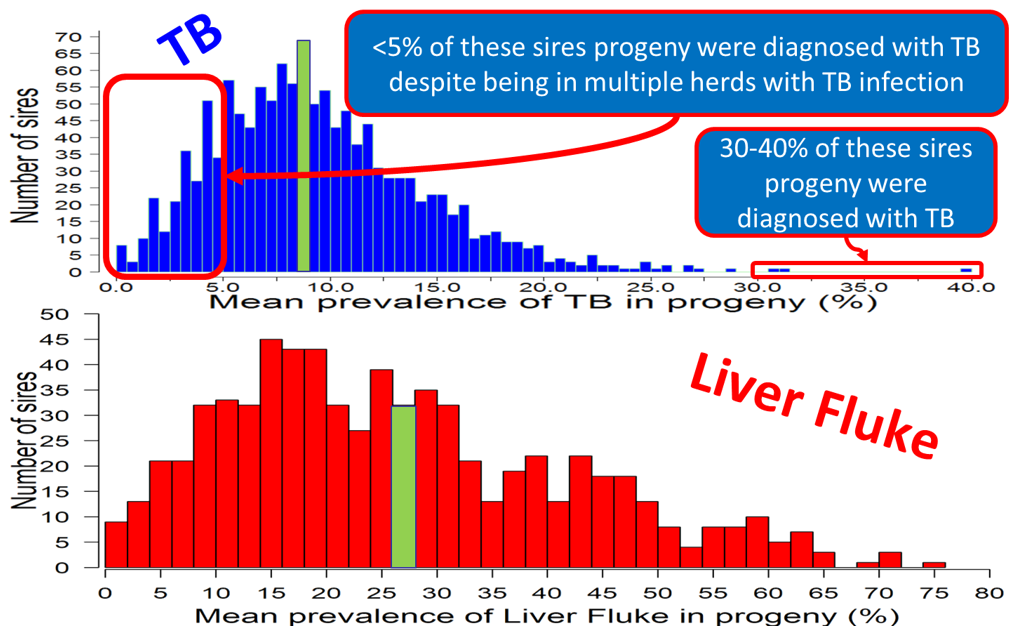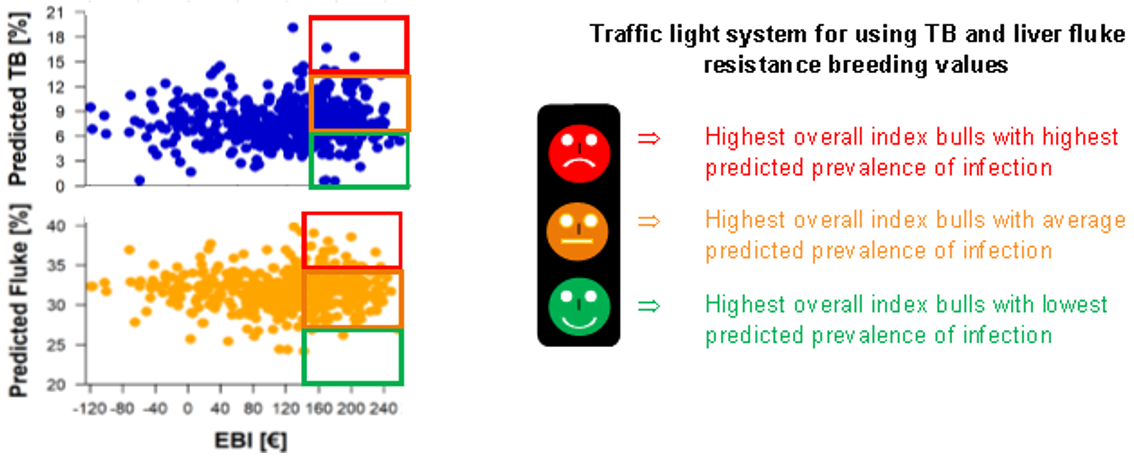On the 21st January 2019, ICBF launched two new genetic evaluations for health traits – bovine tuberculosis (TB) and liver fluke resistance. After years of research and development by Teagasc and ICBF, supported by DAFM, these traits will help dairy and beef farmers protect their herd from TB and liver fluke infection.
Ability to predict genetic resistance to TB and liver fluke infection
Even though most cattle in a herd are managed as a uniform group, there are differences in the genetic merit of cattle for resistance to TB and liver fluke infection, which translates to differences in the on-farm prevalence of TB and liver fluke infection.
The number of TB reactors in herds undergoing a TB-breakdown is, on average, 26% higher in cattle with the worst breeding values for TB resistance compared to cattle with the best breeding values for TB resistance. Cattle with more favourable breeding values for TB resistance are less likely to become infected; therefore, herds that have many cattle genetically more resistant to TB are also less likely to incur TB-breakdowns. Similarly, the number of cattle diagnosed with liver fluke infection is, on average, 17% higher in cattle with the worst breeding values for liver fluke infection compared to cattle with the best breeding values for liver fluke infection.
For some bulls, a high percentage of their progeny become infected with TB or liver fluke infection, whereas other bulls have progeny that never become infected with TB or liver fluke infection, despite residing in herds that are infected with the disease (Fig. 1).

Understanding the breeding values
Lower breeding values for resistance to TB and liver fluke are more desirable, meaning that fewer progeny are expected to become infected with TB or liver fluke infection during their lifetime. For each one percentage unit increase, 1% more progeny are expected to become infected. For example, if a bull has a breeding value of 2% for TB resistance, on average, 2% of his progeny are expected to be TB reactors in their lifetime. Breeding values typically range from 0% to 20% for TB resistance, and from 20% to 40% for liver fluke resistance.
Importance of breeding for genetic resistance to TB and liver fluke infection in your herd
Breeding for resistance to TB or liver fluke is complementary to existing control and eradication programmes which should accelerate the rate of TB removal from Ireland as well as reduce the prevalence of liver fluke without having any major negative ramifications on other traits.
The emphasis each herd places on breeding for resistance to TB or liver fluke is likely to vary by precedence of infection (e.g., history of a TB-breakdown, many cattle diagnosed with liver fluke at slaughter) and selection emphasis on other traits etc.
To minimise the risk of TB and liver fluke infection whilst achieving the most profitable herd, select cows and bulls for breeding that have the highest overall index (i.e., EBI, Replacement Index, or Terminal Index) with the lowest breeding values (i.e., lowest predicted prevalence) for TB and liver fluke resistance (Fig. 2)

Publication details
Genetic resistance to TB and liver fluke have been published for beef and dairy AI bulls that are either genotyped or have ≥20 progeny records in infected herds. Unlike other health traits which are included in the EBI or €uro-star indexes, genetic resistance to TB and liver fluke have been published as two stand-alone traits. Over-time, both traits will be incorporated into the EBI and €uro-star Indexes and will be available for all animals.
| Genetic Evaluations for genetic resistance for TB and Liver fluke |
